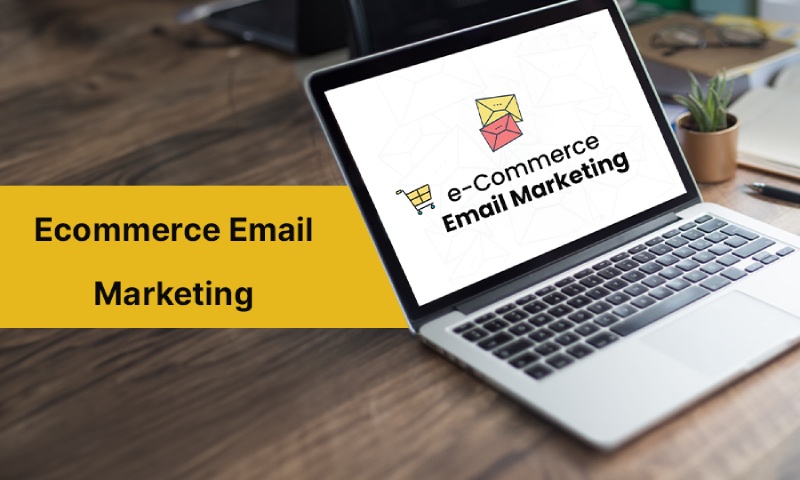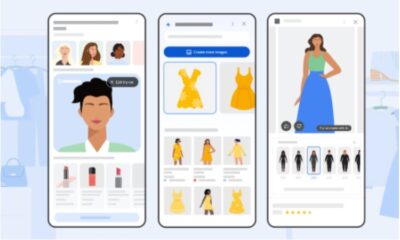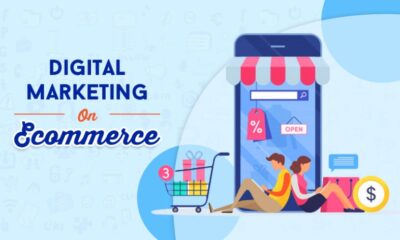Business
14 Tips to Grow Your Business Using E-Commerce Email Marketing

Consider e-commerce email marketing if you want to increase sales and improve your outreach. In a Litmus survey conducted in 2023, 41% of marketers stated that email marketing is their most effective channel, surpassing both paid search and social media.
According to a Statista report, more than 70% of consumers in the United States would prefer that brands contact them via email, so why not give them what they want? To get the most out of your e-commerce email marketing strategy, follow these best tips.
What Is E-Commerce Email Marketing?
A strategy for sending a strategic series of emails to customers is known as e-commerce email marketing. It is just one part of your overall strategy for e-commerce. Your audience could be people who are already customers, people who have been customers before, or people who have just shown an interest in your brand.
To keep readers engaged, use email marketing to send a variety of messages. Emails to customers who abandon their carts, weekly newsletters, automated welcome emails, and membership or VIP deals are just a few examples. E-commerce email marketing aims to get customers to buy more of your products and services.
Why E-Commerce Email Marketing Is Important?
For your small business, there are numerous reasons to think about e-commerce email marketing. Even if you don’t have the money to hire an email marketing team or buy the best email marketing software, your business can still benefit from the following advantages.
Email Can Improve Your Return on Investment (ROI)
The return on investment (ROI) in email is substantial. E-commerce email marketing has a return on investment of approximately $44 per $1 spent. That is a lot higher than the ROIs for paid advertising and e-commerce search engine optimization (SEO), which are $2 for every $1 spent and $2.75 for every $1 spent, respectively. That doesn’t mean you ought to pour each marketing dollar you have into an email, however, it implies you ought to move a greater amount of your concentration toward it.
Use Of Email Is On The Rise
Email just keeps getting better and better. There were 4.26 billion people using email in 2022, and that number is expected to rise to 4.73 billion users by 2026. Facebook, on the other hand, is only anticipated to have 3.1 billion users by 2027. Email is the place to be if you want to go where the people are.
More Companies Are Using Email
64% of small businesses use email marketing to reach customers, according to research. You will need to participate if you do not want to be left behind. If you don’t, customers may go to other companies instead of yours.
Email Further Develops Brand Awareness
The primary goal of nearly 86% of email marketers’ campaigns is to raise brand awareness. You can educate your customers about your offerings and keep your products top of mind when customers are ready to purchase by sending timely and relevant emails.
14 Tips to Grow Your E-Commerce Email Marketing
Are you ready to launch an effective email campaign? Take your e-commerce email marketing to the next level by following the tips below.
- Use Email Marketing Software
We recommend purchasing email marketing software to assist you in managing all of your campaigns, audiences, and click-through rates (CTRs) before you begin. They make it much simpler to create and send emails to specific customers and to determine which ones are most successful. One of the best options for all-in-one marketing is Mailchimp. Constant Contact is another option, with plans priced differently based on your company’s needs. However, there are numerous other options to consider.
- Use Abandoned Cart Emails
It’s like having a fish on your marketing line when someone gets close to finishing their purchase but doesn’t. Use the fact that you know exactly what they want to buy to entice them. Email customers who abandon their carts to let them know what they’re missing out on. They succeed in closing the deal because 50% of users who click on an email with a cart abandonment link actually make a purchase.
On the other hand, you do not want to overwhelm your audience. Keep your efforts to three emails per cart abandonment: one within a couple of hours of abandonment, one the next day, and one the day after that.
- Send Out Discounts and Promos
By, for example, providing customers with the opportunity to receive savings and discounts, you can give them a reason to continue subscribing to your email list.
Provide frequent exclusive discounts and promos via email. It could, for example, be as simple as a coupon for a 10% off code for signing up for your newsletter. It could also be something even more exclusive, like getting access to a limited-edition experience or special edition product.
- Always Include a Call to Action (CTA)
Your emails should always have a purpose, whether it’s to get people to buy a particular product or read your latest blog post. Make this CTA easy to understand.
If you want customers to see your new product line, for example, make sure to include a clear link to it and compelling copy that encourages readers to learn more. Email CTAs typically have a CTR of 3% to 5%, which is significantly higher than the CTRs of Facebook ads (1.1% to 1.3%) and Google Ads (0.05%).
- Segment Your Audiences
Segmenting your audience is an important step to take before sending emails. It is regarded as the most efficient method for email marketing campaigns by approximately 78% of marketers.
Organizing your audience by type of customer is how you segment it. You could, for example, create separate email campaigns based on the demographics of your customers, their previous purchase history, their interests in particular products, or even how responsive they were to previous email campaigns.
After you have identified these different audiences, you will be able to produce custom content that is tailored to meet their requirements. You might offer more expensive products to VIP customers who have made higher-value purchases in the past or send them additional bonuses or rewards. There is no end to the possibilities.
- Personalize Your Emails
Along the same lines, you should ensure that your emails are personalized. According to 72% of marketers, this is the most efficient method for email marketing. Naturally, this means calling the customer by name, but it can go even further. Through dynamic content, you can make references to products they have previously purchased or are interested in.
Around 64% of emails make use of dynamic customization. By personalizing the content of your emails, you can help customers develop trust and loyalty in your brand by making them feel less generic and more human.
- Create an Effective Email Subject Line and Preview
Your best shot at goal might come from the subject line. Customers won’t even open your email message if the subject is boring, spammy, or irrelevant. You could have the best-crafted email message ever.
Personalization and emojis are two of the best methods to think about. Currently, 58% of email marketing teams use emojis to add some fun to the inbox and 60% use personalization in the subject line to grab a customer’s interest.
Include the first few lines of your email as well. In modern mailboxes, this frequently appears in email previews. Make sure they are compelling and enticing, perhaps with a cliffhanger that forces the reader to click through the message to discover the answer to their question.
- Design Emails for Both Mobile and Desktop Users
Even though mobile users are more common than ever before, not everyone has given up desktop computers. The answer? Make emails that look great in both formats with a responsive design. 63% of email marketers use this tactic. You will maximize your chances of success if you ensure that your emails are enjoyable for everyone, regardless of where they are read.
- Try Out A/B Testing
A method for determining which version of an email performs better is A/B testing. You will send two versions of an email: one that serves as a control and follows your typical strategy, and one that serves as an experiment and only changes one aspect. The results of each email will then be monitored to determine which one generated more interest.
Personalization in the subject line, animated GIFs or PNGs, and emojis in the subject line are the most frequently tested elements by email marketing teams. On the other hand, you could test a variety of CTAs, font sizes, color schemes, and more with it.
- Preview Your Email Before Sending
This advice ought to be obvious, but we are aware of how frantic things can become when you have a deadline. Before you send your email, always preview it to make sure that everything is spelled correctly, that customization works as intended, and that all images load correctly.
If there are a lot of typos in your email or broken links, people won’t take you as seriously. This is supported by studies: When compared to companies that did not regularly test each email before sending it, those that did saw an average improvement of 6% in ROI.
- Invest in Automation
Approximately 71% of marketers consider email automation campaigns to be the most important strategy for email marketing campaigns. This is because they will simplify your life significantly. Email automation services can curate cart abandonment emails, product reminder emails, and even out-of-stock notification emails on your behalf rather than handcrafting and sending each message individually. You can even create a welcome drip campaign to send out automatically to every new member of your email list.
- Avoid Spamming Your Email Lists
Receiving 12 messages per day from the same company is unpleasant. You should keep the number of emails you send to a reasonable amount. According to research, the ideal number of emails to send is 9 to 16 per month or about 2 to 4 per week.
However, you should not make the error of sending insufficient emails. Sending more than 33 emails per month has a higher ROI than sending just one email per month. To stay at the top of a customer’s mind, you need to be consistent without being overwhelming.
- Carefully Consider The Elements Of Design.
Email is more than just sending a timely message. The visual experience is also important. Your emails should look nice to show off your brand well. Emails that are designed specifically for Dark Mode are one area that many companies are not optimizing. This mode is used by up to 40% of email users, so if your message is written in all-black text, it might not even be readable.
You could also think about including multimedia in your email. Almost 50% of marketers said that including a video in an email made it perform better.
- Test Out Artificial Intelligence (AI)
Since artificial intelligence (AI) is a hot topic in the marketing world, many email marketers have begun using it to create subject lines, copy, and even CTAs. According to 56% of marketers, AI-generated content performs better for them than non-AI-generated content, suggesting that AI is helping.
However, despite this, you shouldn’t jump on the robot train headfirst. 64% of consumers in our AI survey were concerned about AI being used in personalized advertising, so relying too much on this tool could cost you their trust.
Conclusion
E-commerce email marketing is a great way to get people to buy from you. It’s also a great way to build trust and brand awareness with previous clients. However, getting started can be challenging at times. Making your first email and sending it to your subscribers can be intimidating. However, you will be well on your way to curating an email experience that your followers will adore if you make use of the e-commerce email marketing tips that we have provided here.
-

 Business4 weeks ago
Business4 weeks agoGoing Beyond Expectations: Apex Service Partners and Putting People First
-

 Apps4 weeks ago
Apps4 weeks agoGoogle Maps will have AI-powered Features for the First Time in India – 10 Upcoming Updates for the App
-

 Business4 weeks ago
Business4 weeks agoKurt James Wichman Explains How Global Brands Go Local
-

 Entertainment4 weeks ago
Entertainment4 weeks agoVISHAAD, Starring Rajeshwar, Ashish Vidyarthi and Ketaki Narayan, Heads to KIFF 2025!
-

 Real Estate4 weeks ago
Real Estate4 weeks agoStephen Monro on the Evolution of Mediation Services in Real Estate
-

 Business3 weeks ago
Business3 weeks agoWhy Hundreds Choose Movers in Raleigh for a Fresh Start
-

 Travel3 weeks ago
Travel3 weeks agoBwindi’s Gorilla Tourism: Saving Wildlife, Empowering Communities
-

 Education2 weeks ago
Education2 weeks agoJoseph Curran: Using Legal Writing and Advocacy to Simplify Complex Issues for Clients
























